Headlines
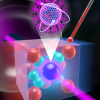 Nuclear clocks could revolutionize timekeeping by using a uniquely low-energy transition within the nucleus of a thorium-229 atom. This transition is less sensitive to environmental disturbances than modern atomic clocks.
Nuclear clocks could revolutionize timekeeping by using a uniquely low-energy transition within the nucleus of a thorium-229 atom. This transition is less sensitive to environmental disturbances than modern atomic clocks.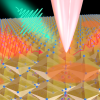 A team of CU Boulder scientists published in Science Advances the results of significant innovations in ultrafast nanoimaging, visualizing matter at its elementary atomic and molecular level.
A team of CU Boulder scientists published in Science Advances the results of significant innovations in ultrafast nanoimaging, visualizing matter at its elementary atomic and molecular level. Mesa Quantum, a CU Boulder spinout and leader in quantum sensing, recently announced $3.7 million in seed funding and a $1.9 million grant from SpaceWERX, the innovation arm of the U.S. Space Force.
Mesa Quantum, a CU Boulder spinout and leader in quantum sensing, recently announced $3.7 million in seed funding and a $1.9 million grant from SpaceWERX, the innovation arm of the U.S. Space Force.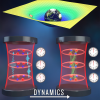 In collaboration with Leibnitz University, the Austrian Academy of Sciences, and the University of Innsbruck, Professors Jun Ye and Ana Maria Rey are exploring the effects of relativity on quantum entanglement and interactions in an optical atomic clock.
In collaboration with Leibnitz University, the Austrian Academy of Sciences, and the University of Innsbruck, Professors Jun Ye and Ana Maria Rey are exploring the effects of relativity on quantum entanglement and interactions in an optical atomic clock.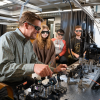 Professor Scott Diddams (Electrical Engineering, Physics) was elected for his contributions to optical frequency combs and their applications. Election to the National Academy of Engineering is among the highest professional distinctions accorded to an engineer.
Professor Scott Diddams (Electrical Engineering, Physics) was elected for his contributions to optical frequency combs and their applications. Election to the National Academy of Engineering is among the highest professional distinctions accorded to an engineer. After graduation, Wu joined Quantinuum, where her extensive background in ion trapping is well applied in helping Quantinuum develop ion-trap-based quantum technologies. “I’m excited to be part of this journey and to help build extremely advanced quantum computers for the future," Wu says.
After graduation, Wu joined Quantinuum, where her extensive background in ion trapping is well applied in helping Quantinuum develop ion-trap-based quantum technologies. “I’m excited to be part of this journey and to help build extremely advanced quantum computers for the future," Wu says.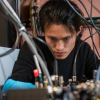 “The Frequency comb laser was originally invented for optical atomic clocks, but very early on, we identified its powerful application for molecular sensing,” said Jun Ye, a fellow of JILA and NIST and professor adjoint of physics at CU Boulder. “Still, it took us 20 years to mature this technique, finally allowing universal applicability for molecular sensing.”
“The Frequency comb laser was originally invented for optical atomic clocks, but very early on, we identified its powerful application for molecular sensing,” said Jun Ye, a fellow of JILA and NIST and professor adjoint of physics at CU Boulder. “Still, it took us 20 years to mature this technique, finally allowing universal applicability for molecular sensing.”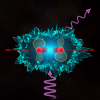 When atoms collide, their exact structure—for example, the number of electrons they have or even the quantum spin of their nuclei—has a lot to say about how they bounce off each other. This is especially true for atoms cooled to near-zero Kelvin, where quantum mechanical effects give rise to unexpected phenomena.
When atoms collide, their exact structure—for example, the number of electrons they have or even the quantum spin of their nuclei—has a lot to say about how they bounce off each other. This is especially true for atoms cooled to near-zero Kelvin, where quantum mechanical effects give rise to unexpected phenomena.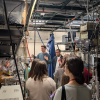 As the snow fell the last weekend in January, 180 undergraduate students gathered in the Duane Physics building at the University of Colorado Boulder for the Conference for Undergraduate Women and Gender Minorities in Physics (CU*iP), an annual three-day event sponsored by the American Physical Society.
As the snow fell the last weekend in January, 180 undergraduate students gathered in the Duane Physics building at the University of Colorado Boulder for the Conference for Undergraduate Women and Gender Minorities in Physics (CU*iP), an annual three-day event sponsored by the American Physical Society.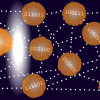 Understanding whether and why many-body localization (MBL) happens can help scientists delve into the fundamental laws of nature and unlock new possibilities for technologies like quantum computing, where preventing the loss of quantum information is critical.
Understanding whether and why many-body localization (MBL) happens can help scientists delve into the fundamental laws of nature and unlock new possibilities for technologies like quantum computing, where preventing the loss of quantum information is critical.

